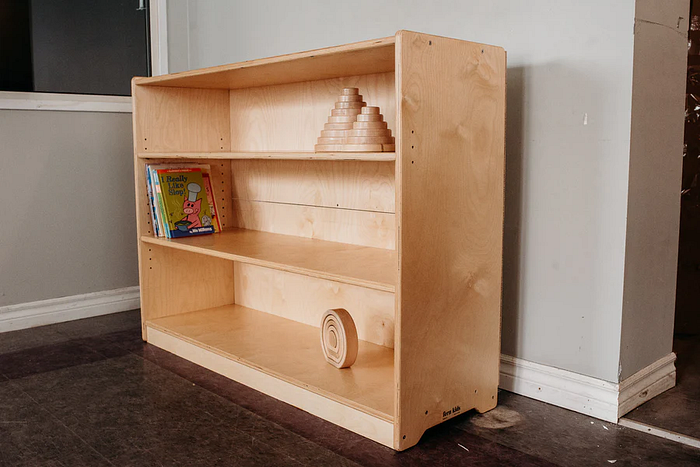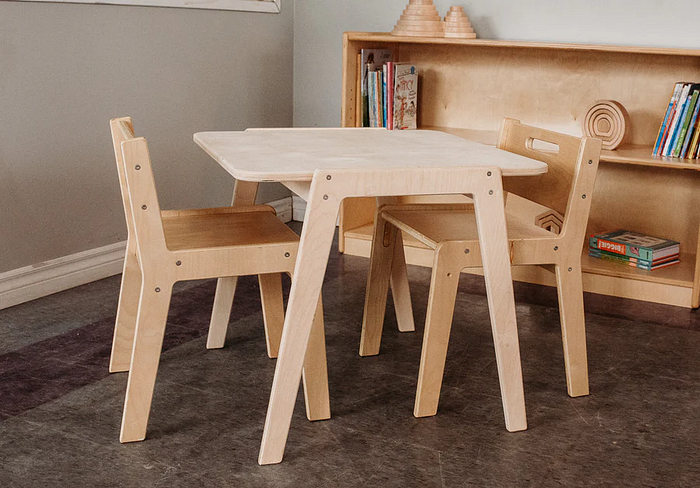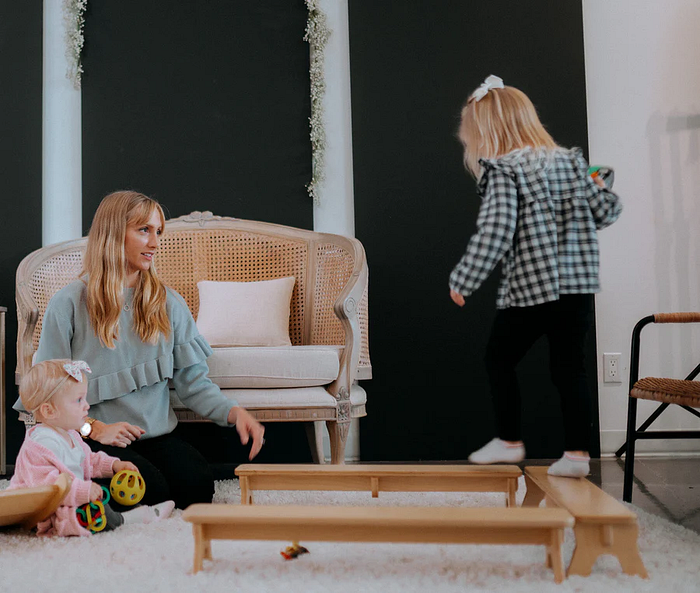Why Montessori Furniture and Kids Shelves Matter in Every Child’s Space
 Fern kids
Fern kidsIntroduction
Imagine a space where every chair fits just right, every shelf invites curiosity, and every child moves freely and safely. That’s the promise of Montessori furniture, kids shelves, and children’s wooden furniture — environments made for little learners to feel empowered, creative, and independent.

This article explores how thoughtfully designed furniture can shape not only a room but a child’s growth and sense of self. Whether you’re a parent, teacher, or daycare provider, you’ll find practical insights on how wooden classroom furniture and Montessori principles can help build better environments for kids to thrive.
What Is Montessori Furniture?
Montessori furniture is child-centered in both design and function. It allows children to move freely and use the furniture without help, encouraging autonomy. Think of it as furniture designed not to control the child but to support their natural development — with low tables, accessible kids shelves, and pieces they can use independently.
Why Kids Shelves Encourage Independent Learning
Well-designed kids shelves do more than organize toys — they act as invitations to learn. When a child can clearly see and reach their items, they’re more likely to make independent choices. This freedom nurtures self-confidence and builds decision-making skills from an early age.
Instead of overwhelming clutter, Montessori-aligned shelving features a few intentional items at a time, rotated regularly to maintain engagement. It’s a subtle way of saying, “You’re capable. You choose.”
The Timeless Appeal of Wooden Classroom Furniture
There’s a reason wooden classroom furniture has remained a staple for decades. Wood is naturally warm and calming, making classrooms feel welcoming rather than overstimulating. Unlike plastic, which can appear flashy and temporary, wood gives a grounded, timeless feel to any space.

It’s also incredibly durable, standing up to years of use without losing its charm. Many educators and designers favor it not only for its strength but also because it aligns with the calm, neutral aesthetics of the Montessori method.
Benefits of Children’s Wooden Furniture at Home
Bringing childrens wooden furniture into your home adds more than charm — it brings practical, age-appropriate support to your child’s everyday life. When children have access to tables, chairs, and shelves built for their size, they feel more in control. Mealtime becomes easier, reading becomes more inviting, and independent play becomes the norm.
Wooden pieces are often handcrafted, made from sustainable materials, and designed to last — making them a smart long-term investment.
Why Simplicity Works: Less Is More in Montessori Design
In a world filled with noise, lights, and over-the-top toys, Montessori furniture offers a quiet refuge. Its beauty lies in simplicity. By limiting distractions, children can focus more clearly, explore more deeply, and find calm in their surroundings.
A single low shelf holding a few puzzles or books can be more powerful than a closet full of plastic bins. Why? Because it invites mindful interaction. Fewer choices reduce overwhelm and help children engage with purpose.
Organizing with Purpose: Storage That Teaches Responsibility
When storage solutions are tailored to the child’s level, they become tools for learning — not just cleanup. Open kids shelves make it easy for children to know where things belong. When kids can reach, retrieve, and return items on their own, they begin to understand the value of order.
It’s not about being tidy for the sake of it; it’s about creating routines and responsibilities that nurture growth.
Choosing the Right Height and Size for Kids Shelves
It’s essential to choose kids shelves that match the child’s height and developmental stage. Shelves that are too tall frustrate, while those that are too small may limit what can be stored effectively.
For toddlers, low, wide shelves with no doors work best. Preschoolers can handle slightly taller units. The goal is always the same: accessibility without assistance. Children thrive when they can reach their things without asking an adult every time.
Wooden vs. Plastic Furniture: What’s Better for Kids?
Let’s compare just a few aspects:
Durability: Wooden furniture tends to last much longer and resist daily wear.
Safety: Wood has a natural weight and stability, reducing tipping risks.
Aesthetics: Wood adds warmth and a sense of peace that plastic lacks.
Sustainability: Most children’s wooden furniture is more eco-friendly than mass-produced plastic alternatives.

Wooden pieces also age gracefully, often becoming family heirlooms, while plastic usually breaks or becomes obsolete.
Eco-Friendly and Sustainable Choices Matter
Choosing wooden classroom furniture or Montessori furniture often aligns with greener living. Many brands use responsibly sourced wood and natural finishes. This doesn’t just help the planet — it protects indoor air quality and ensures your child isn’t exposed to harmful toxins.
Every piece you choose can be part of a larger movement toward mindful, sustainable living. It’s a powerful lesson for children to grow up with.
Creating Calm Spaces with Wooden Tones and Natural Design
There’s a reason so many Montessori spaces look like serene art galleries. Wooden textures, neutral colors, and uncluttered design aren’t just pretty — they promote emotional regulation.
Incorporating children’s wooden furniture into a space invites balance. Add a small wooden reading chair, a simple shelf with natural materials, and you create an environment that supports mindfulness and calm.
Safety First: How Montessori Furniture Protects Kids
Safety is non-negotiable when designing for children. Montessori furniture is intentionally crafted to minimize risks:
Rounded edges to prevent bumps
Solid, balanced construction to avoid tipping
Non-toxic paints and finishes
Because children use these items independently, everything is designed with maximum security in mind.
Mixing Style with Function: Decorating Tips
Functional spaces can be beautiful, too. Use kids shelves as both storage and display. Arrange books with covers facing out. Place a small plant or family photo on the top shelf to make it feel homey.
Stick with soft tones — light wood, whites, creams — to maintain a peaceful vibe. The key is combining elegance with usefulness so your space works for both child and adult.
Affordable Montessori-Inspired Ideas for Every Budget
You don’t need to go all-in with designer Montessori furniture to create an effective learning space. Try:
Repurposing second-hand furniture
Using crates as makeshift low shelves
Rotating toys instead of overbuying
The Montessori mindset is more about intention than perfection.
Furniture That Grows with the Child
Investing in pieces that evolve with your child is smart and sustainable. Adjustable kids shelves or multi-use wooden benches are great examples. A low shelf today might become a side table tomorrow.
These adaptable pieces mean less waste, more value, and continuity in your child’s daily routine.
Final Thoughts: Why Every Child Deserves a Thoughtful Space
When you fill a room with Montessori furniture, children’s wooden furniture, and accessible kids shelves, you’re doing more than decorating — you’re designing a world made just for your child.
These small decisions shape big experiences: independent thinking, calm routines, and a joyful love of learning. And that, truly, is the best foundation you can give.
FAQs
1. What is the ideal height for kids shelves?
The height should allow children to reach the top shelf comfortably. For toddlers, this usually means 12–18 inches; for preschoolers, 24–30 inches.
2. Is wooden classroom furniture safe for daycare use?
Yes. When made to safety standards, wooden furniture is both sturdy and non-toxic, making it ideal for high-use environments like daycare centers.
3. Can I use Montessori furniture in a non-Montessori home?
Absolutely! The principles of child-friendly, accessible furniture work in any home that values independence and learning.
4. How often should I rotate items on kids shelves?
Every 1–2 weeks works well for most children. Watch for boredom or neglect — those are signs it’s time to change things up.
5. Where can I buy affordable children’s wooden furniture?
Try local artisans, Montessori-focused retailers, secondhand stores, or DIY projects with simple plans online.
Subscribe to my newsletter
Read articles from Fern kids directly inside your inbox. Subscribe to the newsletter, and don't miss out.
Written by

Fern kids
Fern kids
At Fern Kids, we are a team of designers and manufacturers who are passionate about creating eco-friendly and child-friendly furniture that inspires learning and growth.